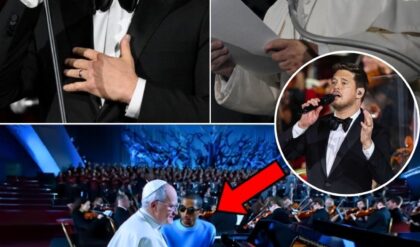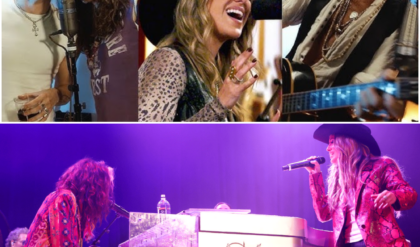
Acolyte showrunner Leslye Headland and Lucasfilm head Kathleen Kennedy have been raked over the coals by the media after making “the gayest entry in the Star Wars universe.” However, last night’s episode might be doing more damage than the studio knows.
We are happy to report that #TheAcolyte is “arguably the gayest #StarWars” yet. 🌈 Happy Pride Month! 😉 pic.twitter.com/3oJSykc4Kq
— TheWrap (@TheWrap) June 4, 2024
No matter where you stand on the spectrum of Star Wars fandom, representation is still important in both a cultural and financial sense. What better way to reach a mass audience than having a multicultural cast (which is easy to do in a sci-fi setting)?
That all being said, Lucasfilm’s recent attempts at putting “queer representation” in Star Wars might be setting things back by leagues with some of the creative decisions made in last night’s episode of The Acolyte. As viewers were given a little more background on Osha and Mae (Amandla Stenberg) and their home planet, how the show depicts its LGBTQ+ characters isn’t exactly in the most flattering light.
WARNING: Spoilers for The Acolyte beyond this point!
The Acolyte Not LGBTQ+ Friendly as Producers Shared
 Credit: Lucasfilm
Credit: Lucasfilm
In what is being referred to as one of the most disappointing entries in the Star Wars saga, viewers are introduced to the Force-sensitive Witches of Brendok and the origins of Osha and Mae. While this isn’t quite as thrilling as the episodes that came before, it does give us a glimpse into the outskirts of the High Republic and what sinister forces could be at work.
In “Destiny,” Mother Aniseya (Jodie Turner-Smith) and her presumed partner, Mother Koril (Margarita Levieva), are the guardians of a coven on Brendok, as well as the creators of Osha and Mae. When a group of Jedi scouts (Carrie-Anne Moss, Dean Charles-Chapman, Joonas Suotamo, and Lee Jung-jae) discovers the children’s existence, things take a dark turn as Mae sends the entire clan up in flames in an attempt to murder her sister.
Although the portrayal of young Osha and Mae is possibly the series’ biggest sin in an entertainment sense, the way The Acolyte portrays the community and demographic it proudly claims to defend as the episode’s villains feels counterproductive. Despite efforts to paint the coven as somewhere on the morally gray side, they are still practitioners of the Sith’s dark forces.
A Major Step Backward
 Credit: Lucasfilm
Credit: Lucasfilm
Dozens of movie studios have been pushing inclusivity and representation for years, but Lucasfilm’s presentation of its queer-coded characters is by no means the progressive method the writers might have intended. Not only are they the episode’s villains, but it’s painfully evident that they are on the wrong side of the Force.
Giving credit where credit is due, the writers do at least attempt to keep things more grey than pure evil. Though it might be more accurate to say, “Not 100% the Sith, but they do Sith things.”
They might appear to be a sect completely separate from their cousins on Dathomir, but they are still influential members of the Dark Side. While representation is all well and good, it speaks volumes when the creators choose to portray the group in question in an obviously sinister light.
Mother Aniseya, Mother Korill, and the rest of the coven are portrayed as sympathetic outsiders in the High Republic, living away from the core of civilization in the galaxy far, far away. However, they are also powerful Force users who pull at the “threads” of the universe while reciting doctrine eerily similar to the Siths in the extended universe (The Rule of Two).
 Credit: Lucasfilm
Credit: Lucasfilm
Additionally, Mother Korill, clearly a Zabrak like Darth Maul in The Phantom Menace (1999), doesn’t exactly help the coven’s image. Not only does she attack Padawan Torbin while the Jedi try to engage peacefully, but she also refers to them as “deranged monks” as if to further establish the holy imagery opposing their sinister practices.
Aesthetics can be forgiven, but it was also revealed that Korill and Aniseya “created” the twins, hinting at the use of Sith Alchemy to accomplish their goal. By this factor, the coven has gone beyond the pale and broken the laws of the Republic, the Jedi, and the nature of the galaxy in one fell swoop.
 Credit: Lucasfilm
Credit: Lucasfilm
It’s still early in the series, and we’re not saying that these characters aren’t redeemable, but it’s becoming incredibly evident that the witches are meant to be definite Dark Side supporters, and the Jedi are still the Force for the Light. Additionally, Mother Aniseya’s big line essentially seals their fate.
“This isn’t about good or bad. It’s about power and who is allowed to use it!”
This might not be the last time we see the coven, and more truth about their demise will undoubtedly be revealed in the episodes to come. However, depicting Aniseya and Korill as members of a Sith-like cult feels like a slap in the face to LGBTQ+ fans.
Fans are already tearing the episode to shreds, and the witches are definitely another log on the fire, but to say that the critics are going to have a field day with this one would be an understatement.




